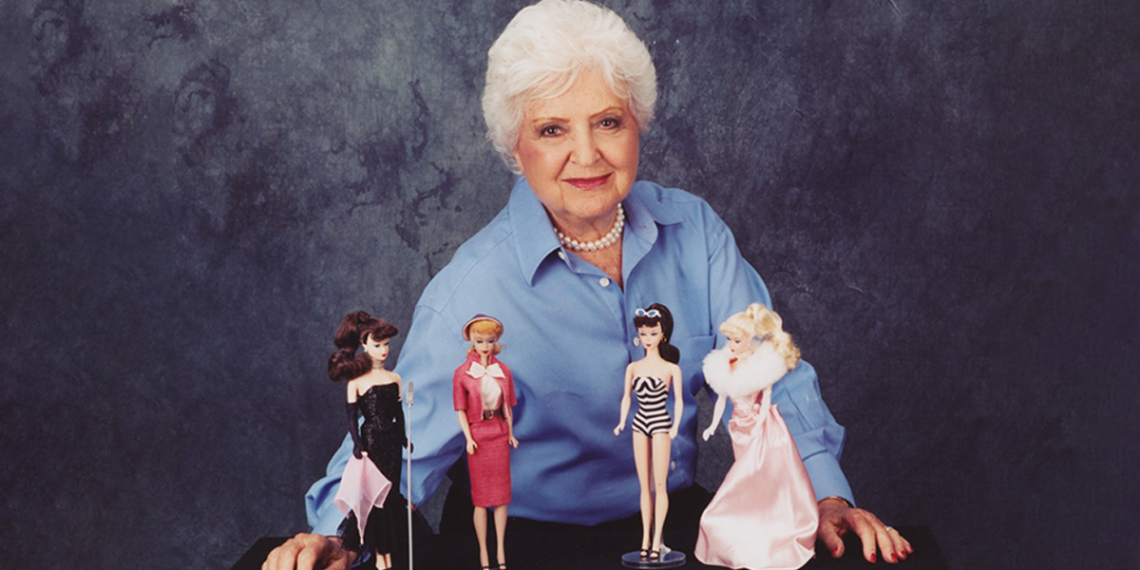When Greta Gerwig started working on a story about a doll with no personality or inner life, she looked at Barbie’s past for ideas. Mattel, the company that makes Barbie, took Gerwig through an “immersion” experience, or a Barbie bootcamp, which covered the doll’s long history.
This included her first appearance at the Toy Fair in New York City in 1959 and her rise to being the most well-known toy globally, with over a billion dolls sold.
Gerwig focused on the relationship between Barbie’s inventor, Ruth Handler, and Handler’s daughter, Barbara, who inspired the name Barbie. In an interview for TIME’s cover story on Barbie, Gerwig shared, “A Barbie movie is only ever going to be a mother-daughter movie on so many levels because it was Ruth Handler and Barbara—that was the relationship.”
Because of this connection, Handler had to appear in the movie. She first shows up as a mysterious figure in a 1950s-style kitchen inside Mattel’s headquarters. As the movie progresses, it’s revealed that Handler is the creator of Barbie and a god-like figure to Margot Robbie’s character, one of the Barbies living in Barbie Land.
Rhea Perlman, known for Cheers, plays Handler, and Gerwig presents her as a kind but flawed deity. Here’s what you should know about Barbie’s creator and her role in the Barbie film.
How did Ruth Handler invent Barbie?
Ruth Handler changed the toy industry when she created a doll with the body of an adult woman. Before Barbie, most girls played with baby dolls, which made them think they were meant to be mothers.
In the early 1950s, Handler had the bold idea that girls should play with dolls that looked like grown women to help them imagine their future selves. She was inspired by her daughter Barbara, who loved playing dress-up with paper dolls. Handler named the doll Barbie after her daughter.
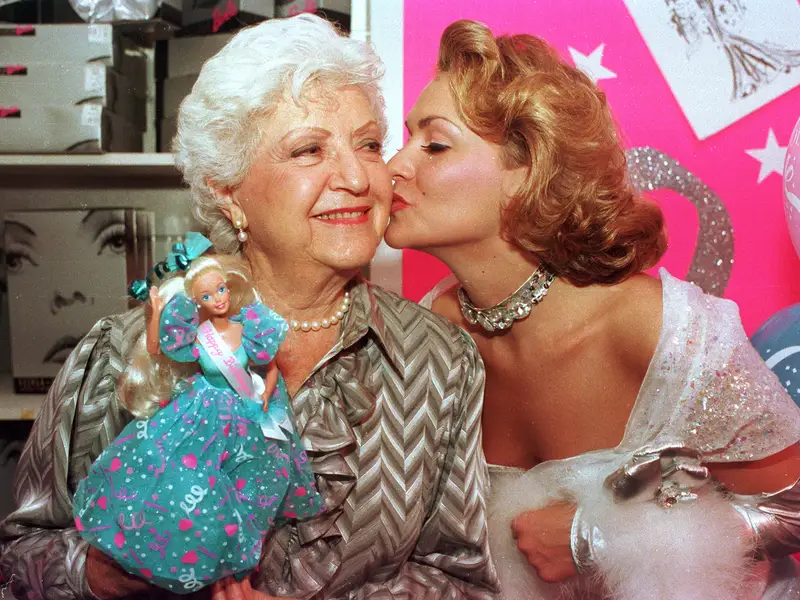
Handler had co-founded Mattel with her husband in 1945 to sell picture frames. Later, they moved into selling doll furniture and eventually other toys. But when Handler suggested making a doll with the body of an adult woman, the company’s executives didn’t like the idea.
They argued that no mother would buy a doll with breasts for their daughter. The idea was put on hold until 1956, when Handler went on a vacation to Europe and saw a German doll called Bild Lilli in a store.
The doll was based on a comic strip character—a pin-up girl with a curvy body, designed as a playful gift for soldiers during World War II. Handler brought one of these dolls back to the U.S. to show Mattel’s designers that they could create something similar.
Barbie made her debut at the 1959 Toy Fair in New York City, dressed in the famous black-and-white striped bathing suit that Margot Robbie’s character wears at the beginning of the movie. The doll became an instant hit, which helped make Mattel very successful.
Fans soon wanted Barbie to have a boyfriend, so Ken, named after Handler’s son, was introduced in 1961. Over time, Barbie changed from being just a fashion doll to a career woman who could be a doctor or astronaut, as well as a fashion icon.
In her book Forever Barbie: The Unauthorized Biography of a Living Doll, author M.G. Lord said that Barbie is one of the most powerful symbols of American culture in the late 20th century.
“She’s an archetypal female figure, she’s something upon which little girls project their idealized selves,” Lord writes. “For most baby boomers, she has the same iconic importance as any female saints, though without the religious meaning.”
Ruth Handler was a complicated woman
As Barbie suggests, Ruth Handler was a complex person. In 1978, Handler and several other Mattel executives were charged by a federal grand jury with conspiracy, mail fraud, and providing false financial statements to the Securities and Exchange Commission. Handler pleaded no contest to the charges. She was fined $57,000 and sentenced to 2,500 hours of community service.
In the 1980s, Handler reinvented herself by selling a completely different product. In a scene in the Barbie movie, Handler mentions her mastectomy, and in real life, she did struggle with breast cancer.
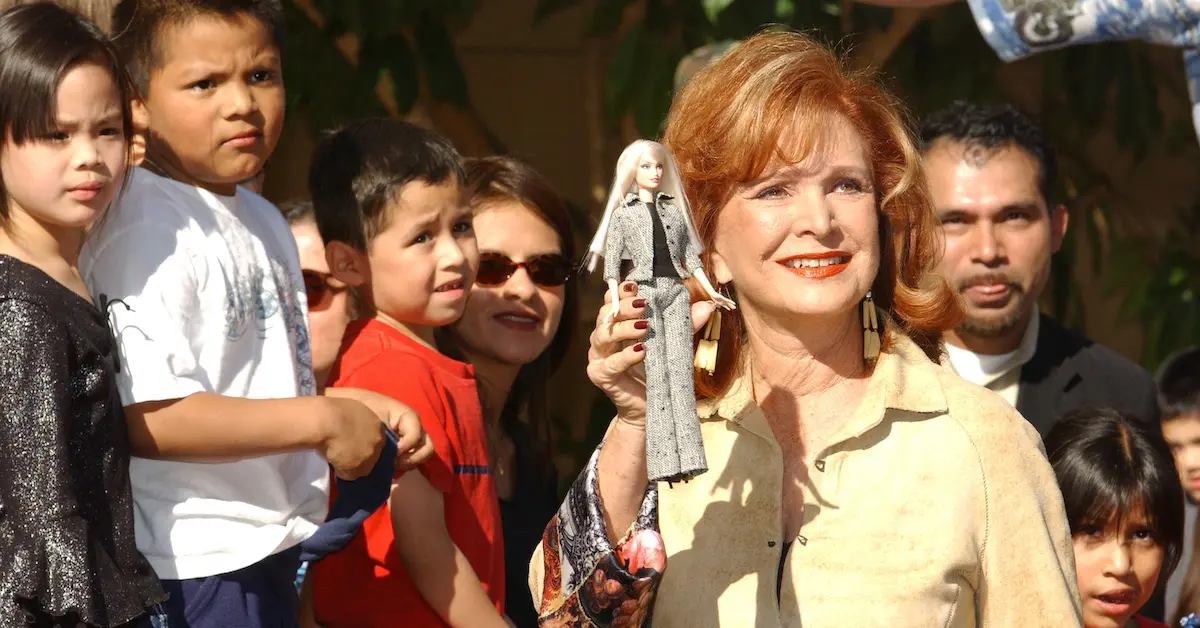
Seeing a need for realistic prostheses designed by and for women, she started selling a product called Nearly Me. She led a team of eight women, most of whom were breast cancer survivors, who would visit department stores to train sales staff on how to fit customers.
Her sales method included what she called her “strip act,” where she would remove her shirt to show that no one could tell the difference between her real breast and her prosthetic one.
People magazine even featured her in this pose. She fitted First Lady Betty Ford for a prosthesis after her mastectomy. Handler eventually sold the company to Kimberly-Clark in the 1990s.
As she grew older, Handler thought about her life as the creator of an adult-shaped doll and a leader in prosthesis development. According to the Los Angeles Times, she often said, “I’ve lived my life from breast to breast.”
Ruth Handler had a reported net worth of $100 million
According to different sources, Ruth was said to have a net worth of $100 million when she died in 2002. She passed away at the age of 85 from complications of surgery for colon cancer, after already battling breast cancer. It’s not surprising that she left behind a fortune, as Ruth was behind two of Mattel’s most creative and successful projects.
Ruth co-founded Mattel with her husband, Elliot, and their friend Harold “Matt” Matson. (Mattel is a mix of “Matt” and “Elliot.”) At first, the world wasn’t ready for a female CEO, but when Matt left the company two years after it was founded, Ruth took on the role anyway. In 1955, she invested the company’s entire fortune in a new form of advertising.
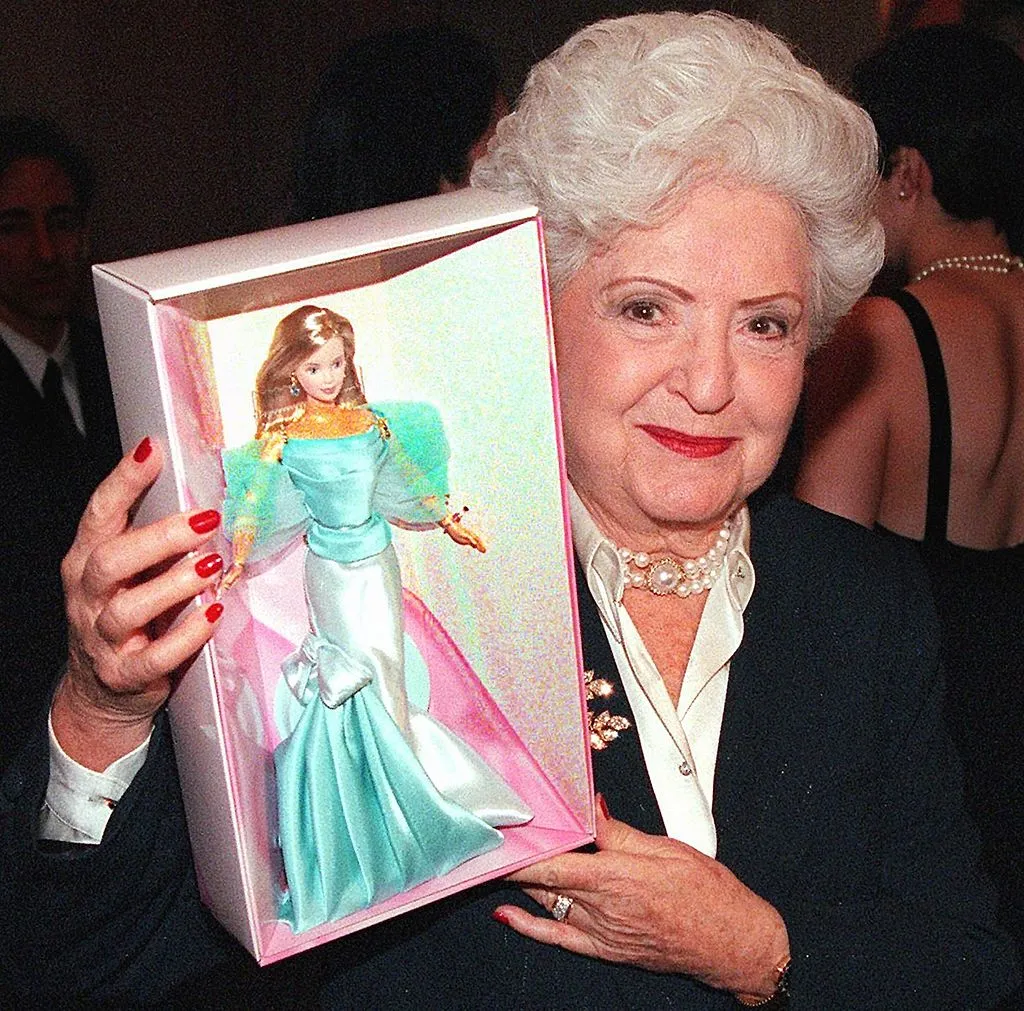
She chose to target toy ads at children by buying 15 minutes of commercial time for each episode of The Mickey Mouse Club. This decision led to a huge increase in sales overnight. This type of advertising is still used by Mattel and many other companies today, playing on children’s desires and parents’ love for their kids.
Ruth also invented Barbie, though a designer named Jack Ryan argued that his contribution to Barbie’s creation had been ignored. Jack was known for his wild lifestyle—he spent his high earnings on a “castle” where he hosted drug-fueled parties, despite being married with a child.
He later sued Mattel for $16 million, claiming he was underpaid, but that lawsuit isn’t the one mentioned in the Barbie movie.
Breast cancer
Handler was diagnosed with breast cancer in 1970, according to People, and had a modified radical mastectomy surgery.
After she recovered, she and her husband Elliot were forced out of Mattel in 1975, according to the LA Times.
“I’d been opinionated and outspoken. I had strong leadership skills. I had been running a company making hundreds of millions of dollars a year. We had 15,000 employees. I had a big job. But suddenly I was supposed to whisper about what I’d been through,” she told the newspaper.
Did Ruth Handler actually get accused of tax fraud?
Yes. If it makes her ghost feel any better, she has something in common with Shakira. In the 1970s, Ruth was involved in a situation where Mattel’s higher-ups were accused of lying on financial reports to make the company appear more successful than it really was.
The company was actually losing millions of dollars. As a result, she resigned as president in 1973. According to Biography.com, by 1975, she and her husband had completely cut ties with the company they co-founded.
However, she couldn’t avoid a tax evasion investigation. In 1978, a grand jury charged Ruth and other former Mattel executives with conspiracy, fraud, and false reporting to the Securities and Exchange Commission.
According to the New York Times, they were accused of falsifying business records to manipulate the price of Mattel stock for their own gain. Ruth pleaded no contest, was fined $57,000, and sentenced to 2,500 hours of community service.
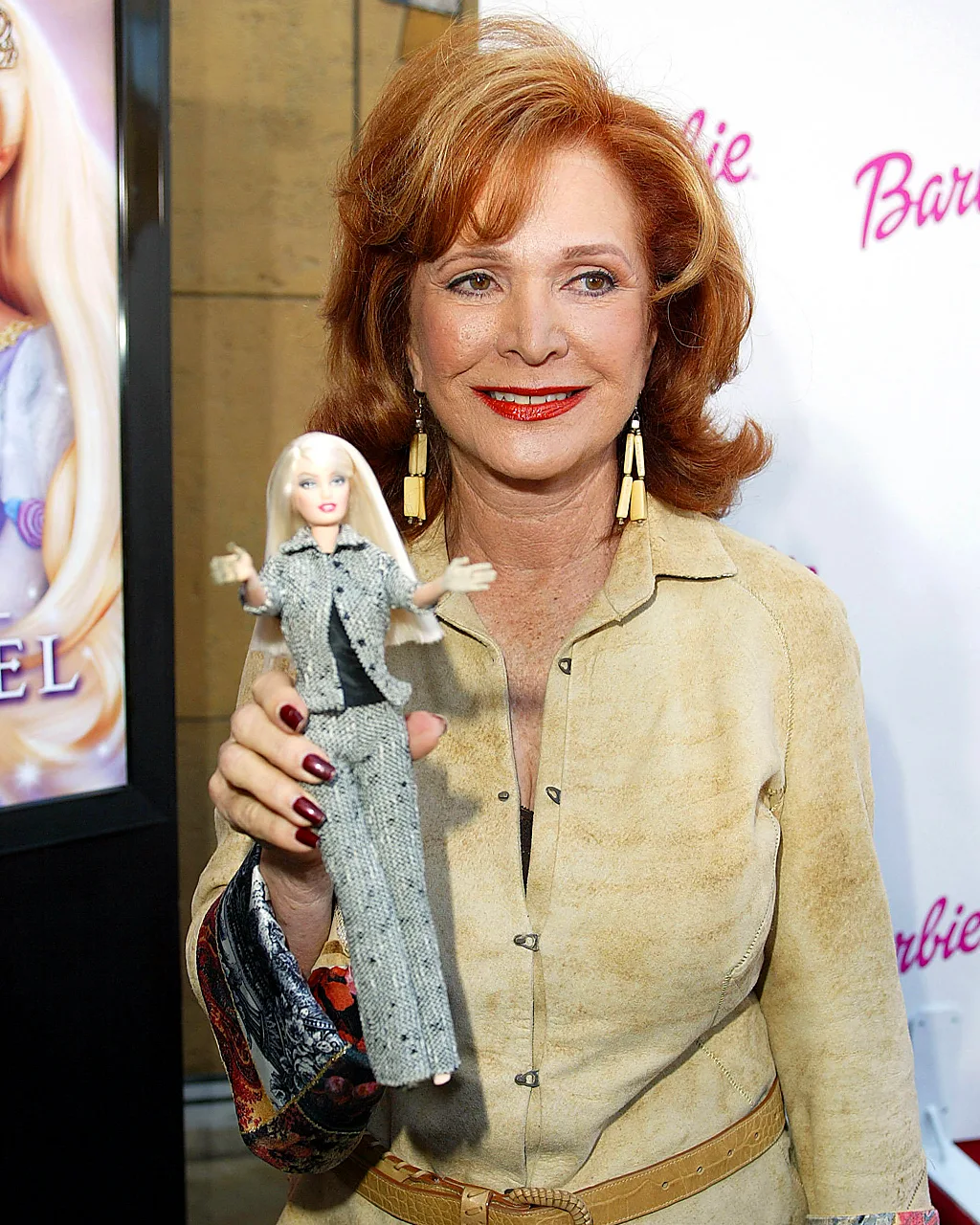
According to the Los Angeles Times, Ruth later suggested that her issues with Mattel were partly caused by her health problems, explaining that her illness made her “unfocused” during a time of corporate restructuring. Ruth was diagnosed with breast cancer in 1970 and had a mastectomy that same year.
When she returned from a leave of absence, she said people treated her differently but wouldn’t discuss why she had been gone. “I was never able to get back in and grab hold of things as I should have,” she reportedly told USA Today in 1994.
Even though her relationship with Mattel ended, she didn’t stop working. She went on to create the Ruthton Corporation, which produced and sold silicone breasts for mastectomy patients, including former First Lady Betty Ford.
While the Barbie movie suggests that Ruth had a double mastectomy, only her left breast was actually removed. According to the New York Times, Ruth used this fact as part of her marketing strategy, sometimes opening her blouse during interviews and inviting the press to feel her chest to see if they could tell which side was fake.
The Los Angeles Times reported that Ruth would sometimes joke about her inventions of both busty Barbies and prosthetic breasts, saying, “I’ve lived my life from breast to breast.”
Is Ruth Handler still alive?
No, she passed away at the age of 85 on April 27, 2002, in a hospital in Los Angeles. Handler’s husband told the Los Angeles Times that she died due to complications from a colon surgery she had three months earlier.
[Updated: 04/04/2025]


